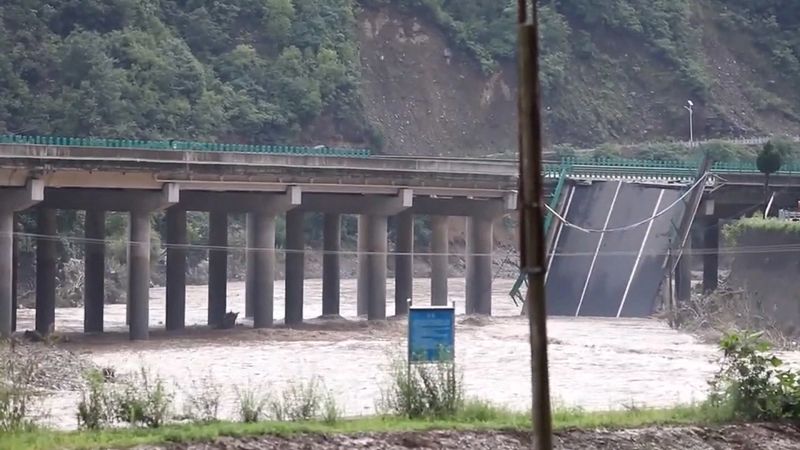As the turbulent waters of the sudden flash floods surged violently across southern China, disaster struck abruptly, leading to the catastrophic collapse of an important bridge. The aftermath was tragic, with an estimated death toll of 15 people. This tragic incident offers a clear view of the disastrous impact flash floods can have, not only on infrastructure but also on human lives.
The bridge, which was a vital transport link for the region, buckled under the mighty power of the rushing water, unable to withstand the sudden and formidable force. Shortly before its collapse, locals had reported ruptured riverbanks and rapidly rising water levels, painting a grim picture of the imminent tragedy.
Tales of survivors bear witness to the speed and strength of the floodwaters, which quickly overwhelmed the once-sturdy structure. Carrying debris and vehicles alike, the surging waters plunged the bridge into an watery abyss, causing a sudden cry of despair to echo out over the inundated land as the community came to terms with the loss of life.
Unfortunately, evacuations were not quick enough or insufficient to prevent the loss of 15 lives, making this one of the deadliest bridge collapses in China in recent years. First responders arrived to scenes of chaos and devastation, struggling to carry out rescue efforts due to the strength of the ongoing floodwaters.
Emergency services and volunteers worked tirelessly, operating under high-risk conditions to recover victims amidst the wreckage. From dawn through to the gruelling night, the recovery process was gruelling. Throughout their operation, the omnipresent echo of the flash flood served as a chilling reminder of the underlying danger faced in these tumultuous conditions.
Beyond the significant human loss, the bridge collapse has drastically affected the local infrastructure. As a critical transit point, its loss has resulted in major disruptions. Neighboring communities find themselves cut off, while emergency vehicles face lengthy detours at a time when every minute could mean the difference between life and death.
On analyzing the causes, authorities have pointed out a series of factors that led to the catastrophic collapse. While the immediate cause was the flash flood, deeper investigations exposed potential design flaws, possibly ineffective maintenance, and potentially inadequate materials used in the construction of the bridge.
Moreover, this tragic event has brought forth a heated debate surrounding disaster management in the region. Critics argue that a potential lack of investment in the structural integrity of bridges and infrastructure in flood-prone areas exposes the public to unnecessary risk.
Despite the melancholy shrouding the disaster, it has also displayed the indomitable spirit of humanity in the face of adversity. Tales of courage, sacrifice, and community cooperation have surfaced following the incident, breathing life into the midst of despair.
Above all, the tragic bridge collapse following flash floods in China underscores the urgent need for investing in resilient infrastructure and fostering comprehensive disaster management strategies. As climate change accelerates, catastrophic incidents may become more frequent, raising the imperative for strategic preparedness in the face of natural disasters to better protect human life and maintain infrastructure.




